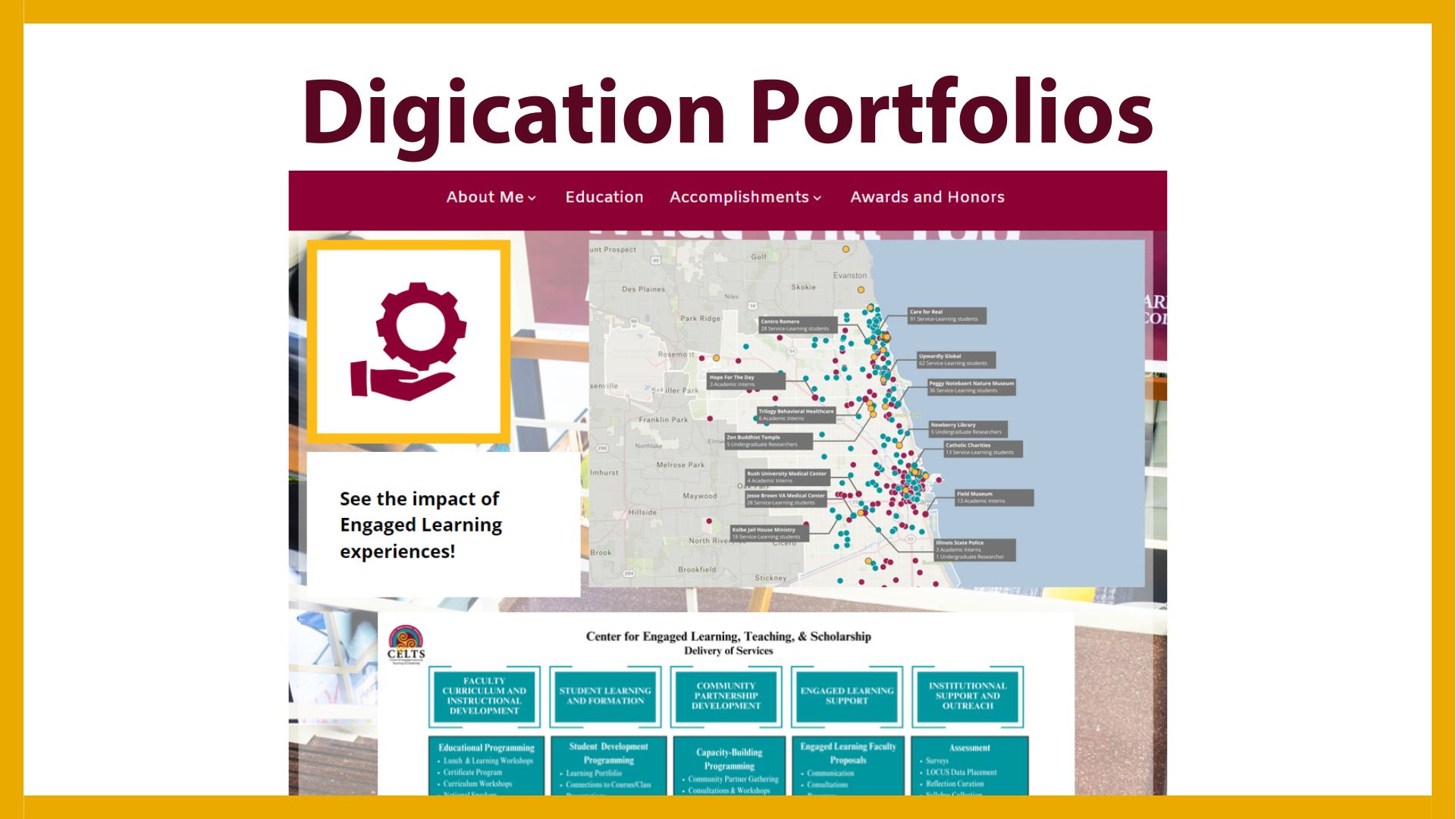Learning Portfolio Program
.jpg)
The goal of the Learning Portfolio Program is to provide resources and support for faculty, staff, and students so that they may receive the maximum benefits of learning portfolios. Loyola University Chicago has contracted with Digication to be the university’s official learning portfolio platform. Click below to learn more about learning portfolios and how they are used at LUC.
Digication Tutorials
The goal of the Learning Portfolio Program is to provide resources and support for faculty, staff, and students so that they may receive the maximum benefits of learning portfolios. Loyola University Chicago has contracted with Digication to be the university’s official learning portfolio platform. Click below to learn more about learning portfolios and how they are used at LUC.


.jpg)
.jpg)